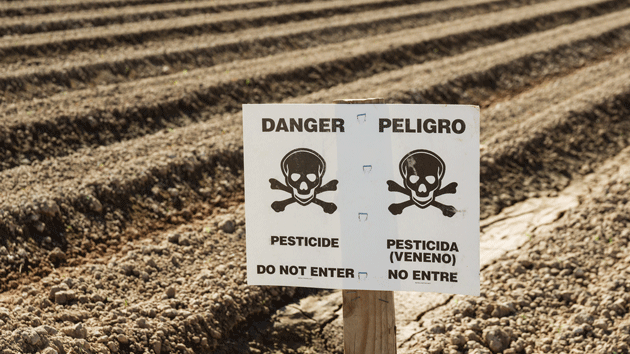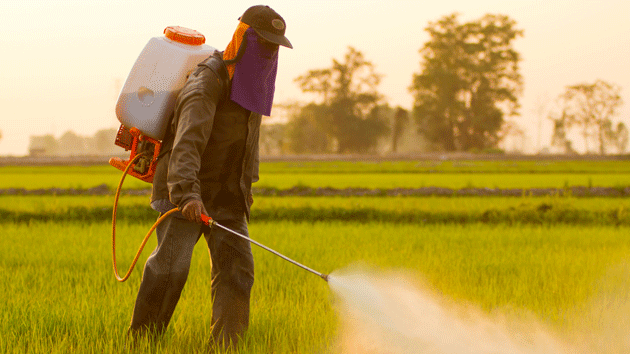
<a href="http://www.shutterstock.com/cat.mhtml?lang=en&language=en&ref_site=photo&search_source=search_form&version=llv1&anyorall=all&safesearch=1&use_local_boost=1&autocomplete_id=143509768245718090000&searchterm=pesticides&show_color_wheel=1&orient=&commercial_ok=&media_type=images&search_cat=&searchtermx=&photographer_name=&people_gender=&people_age=&people_ethnicity=&people_number=&color=&page=1&inline=226389340" target="_blank">Tom Grundy</a>/Shutterstock
Less than three months after declaring that the ubiquitous herbicide glyphosate, marketed by Monsanto as Roundup, is “probably carcinogenic,” a working group of scientists convened by the World Health Organization has taken aim at another widely used herbicide, 2,4-D, which the WHO panel has found to be “possibly carcinogenic.”
These announcements can hardly be welcome news in the Midwest, whose farm fields are blanketed in corn and soybeans. Since the advent of crops genetically engineered to withstand glyphosate in the 1990s, farmers there have come to rely heavily on the herbicide that many weed varieties have evolved to resist, causing many headaches and a surge in herbicide use.
This past spring, Dow Chemical introduced new genetically modified corn and soybean products designed to solve that problem. They’re engineered to resist not just glyphosate, but also, you guessed it, 2,4-D. And Dow is selling farmers a proprietary herbicide known as Enlist Duo, a combo of glyphosate and 2,4-D, that farmers can apply directly to the crops grown from the new genetically modified corn and soybean seeds. As I’ve shown before, these double-herbicide-resistant crops will likely accelerate, not solve, the resistant-weed problem.
Even so, rather than filling their spray tanks solely with a “probable” carcinogen, corn and soybean farmers can now fill up with a mix of “possible” and “probable” carcinogens before spraying their fields. That may sound like a twisted form of progress, but it should be noted that there’s evidence that toxic chemicals do worse things to us when combined than they do solo. That such “synergistic” effects are little studied is hardly comforting.









